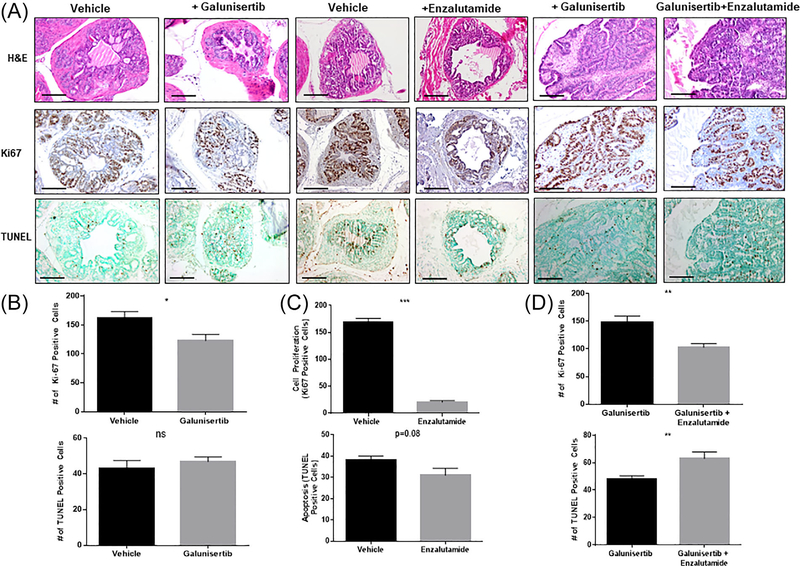FIGURE 2.
Effect of TGFβRI inhibitor (galunisertib) on prostate tumor cell proliferation and apoptosis. Panel A shows representative images of comparative assessment of H&E histological staining, cell proliferation, and apoptosis in serial sections of prostate tumors derived from the (20-wk-old) DNTGFβRII mice after treatment with enzalutamide, galunisertib as single agents or combination treatment. On day 15 posttreatment mice were euthanized and prostate tumors were surgically excised and subjected to immunohistochemical analysis (per Figure 1A) Quantitative analysis of the Ki-67 immunoreactivity among the prostate tumor epithelial cells indicated a significantly lower proliferative index in prostate tumors from galunisertib—and enzalutamide alone—treated mice compared to vehicle control mice (panels B and C respectively; *P < 0.05). While the number of apoptotic (TUNEL-positive) cells among the prostate tumor cell populations after treatment with either the TβRI inhibitor or enazultamide as single agents was not affected, comparative analysis of the apoptotic response to the combination of galunisertib and enzalutamide treatment revealed a significant increase in apoptosis of prostate tumors (Figure 2, panels A and D). Numerical data represent the average scoring of three fields per individual section, assessed by two independent observers. Values represent the average ± SEM (standard error of the mean). Statistically significant difference between groups is set at P < 0.05.

